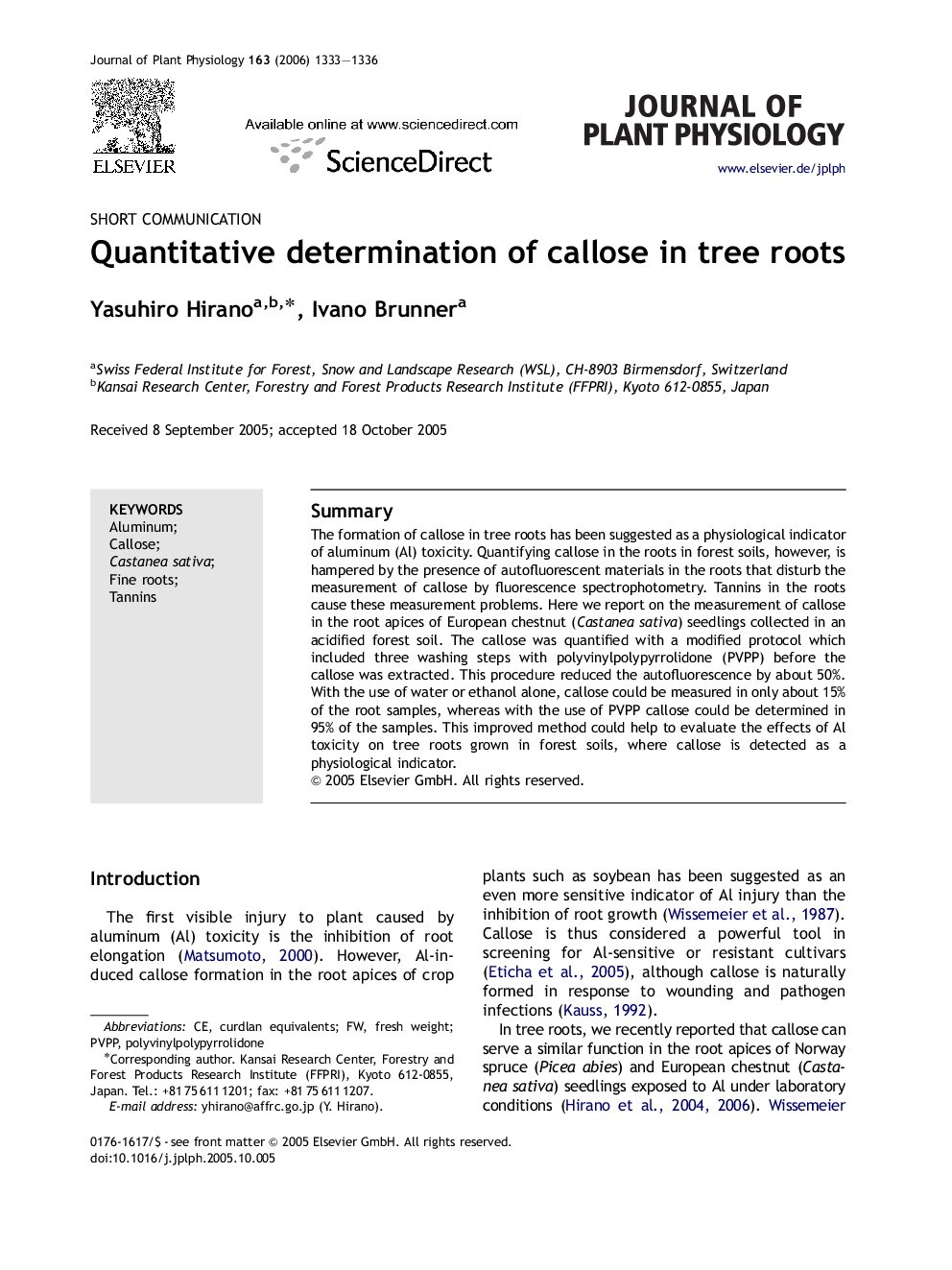| Article ID | Journal | Published Year | Pages | File Type |
|---|---|---|---|---|
| 2057370 | Journal of Plant Physiology | 2006 | 4 Pages |
SummaryThe formation of callose in tree roots has been suggested as a physiological indicator of aluminum (Al) toxicity. Quantifying callose in the roots in forest soils, however, is hampered by the presence of autofluorescent materials in the roots that disturb the measurement of callose by fluorescence spectrophotometry. Tannins in the roots cause these measurement problems. Here we report on the measurement of callose in the root apices of European chestnut (Castanea sativa) seedlings collected in an acidified forest soil. The callose was quantified with a modified protocol which included three washing steps with polyvinylpolypyrrolidone (PVPP) before the callose was extracted. This procedure reduced the autofluorescence by about 50%. With the use of water or ethanol alone, callose could be measured in only about 15% of the root samples, whereas with the use of PVPP callose could be determined in 95% of the samples. This improved method could help to evaluate the effects of Al toxicity on tree roots grown in forest soils, where callose is detected as a physiological indicator.
